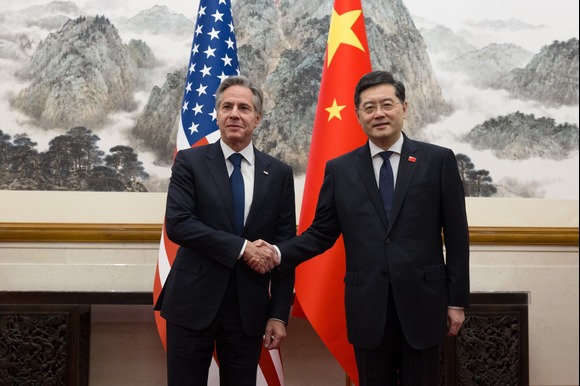
By U.S. Department of State
The US and China have announced that they have reached an agreement in principle on a framework designed to de-escalate long-standing trade tensions between the world’s two largest economies.
US Commerce Secretary Howard Lutnick stated that the proposed framework is expected to help resolve disputes surrounding the export restrictions on rare earth minerals and magnets.
Officials from both countries confirmed that the framework would now be submitted for approval by their respective leaders—US President Donald Trump and Chinese President Xi Jinping.
The development came after two days of high-level trade negotiations in London involving top American and Chinese officials.
Central to the discussions was China’s export of rare earth elements, which are essential components in modern technology.
Just last month, Washington and Beijing reached a temporary truce in their tariff conflict, but since then, both sides have accused each other of violating the terms of that agreement.
US officials have argued that China has delayed the release of shipments containing rare earth metals and magnets—key materials used in the production of smartphones, electric vehicles, and other advanced technologies.
In retaliation, Washington has imposed restrictions on China’s access to US-manufactured goods, particularly semiconductors and other AI-related technologies.
“We have achieved a framework for the implementation of the Geneva consensus,” Lutnick said during a press briefing. “Once the presidents give their approval, we will move to implement it,” he added.
This latest round of talks was initiated after a recent phone call between Presidents Trump and Xi, which Trump described as “a very good talk.”
China’s Vice Commerce Minister Li Chenggang echoed the sentiment, saying, “Both sides have, in principle, agreed on a framework to implement the consensus reached by the two heads of state during their June 5th phone call and the previous meeting in Geneva.”
Earlier this year, President Trump imposed broad tariffs on imports from several countries, with China being hit hardest. Beijing retaliated by raising tariffs on US goods, setting off a series of tit-for-tat tariff hikes that reached a peak of 145%.
The tit-for-tat escalation eventually saw the US lower its tariffs on Chinese imports to 30%, while China reduced its own levies on American goods to 10%. In a bid to ease tensions, Beijing also pledged to lift barriers on exports of critical minerals.
Both countries set a 90-day deadline to work out a comprehensive trade deal.
Despite these measures, each side has since accused the other of breaching the non-tariff aspects of the truce.
US Trade Representative Jamieson Greer said that China had not followed through on its promise to ease restrictions on rare earth magnet exports.
For its part, Beijing pointed to several US actions it says violate the agreement—among them, restrictions on the sale of computer chip design software to Chinese firms, warnings against using Huawei-manufactured chips, and the cancellation of student visas for Chinese nationals.
Prior to this week’s talks, China’s Ministry of Commerce stated on Saturday that it had approved several applications for rare earth export licenses. However, the ministry did not disclose which countries were set to receive the exports.
On Friday, President Trump said that Xi Jinping had agreed to resume trade in rare earth materials.




